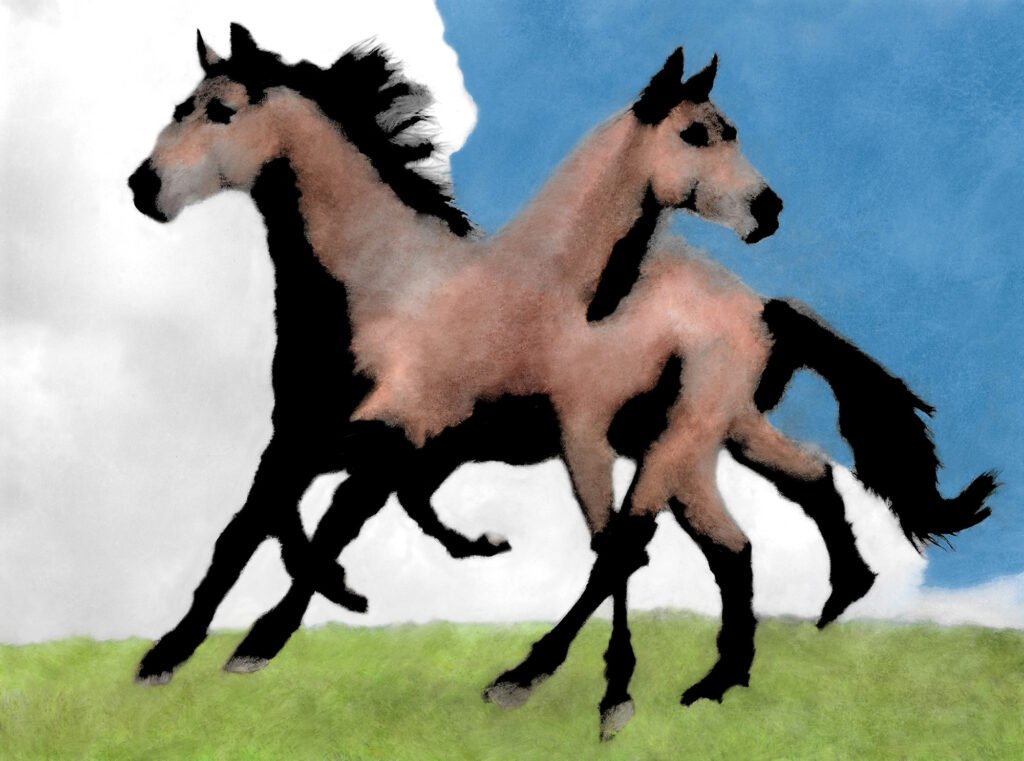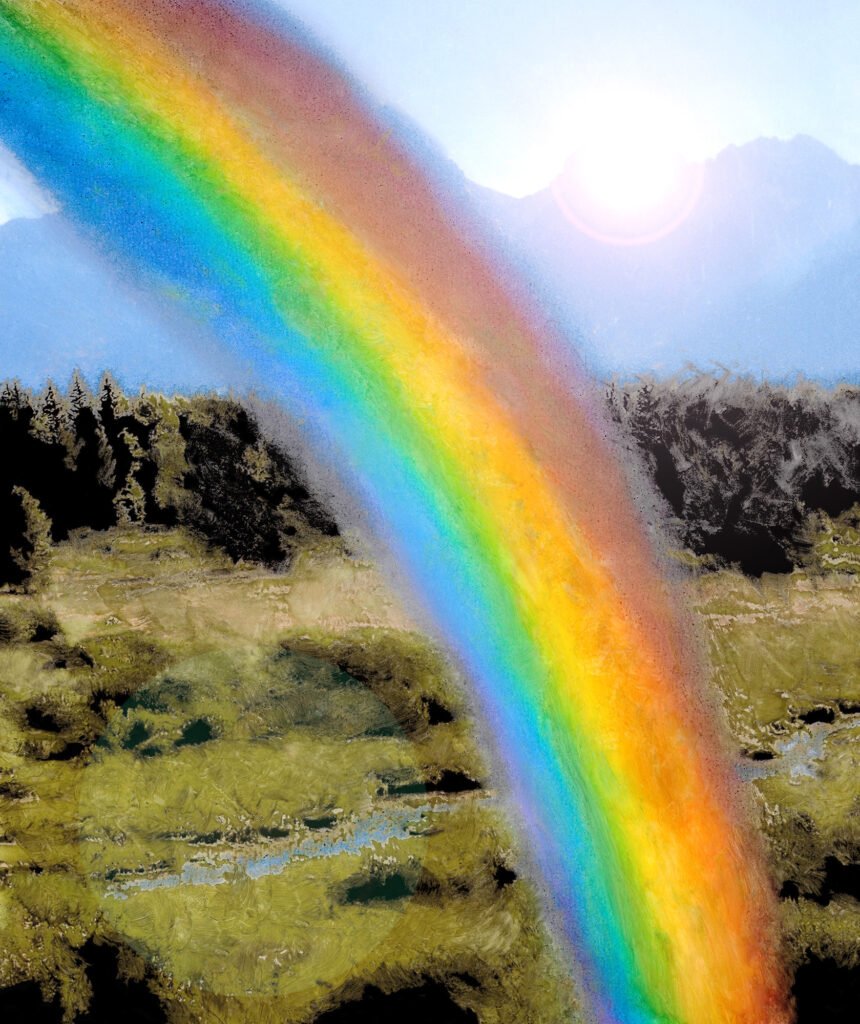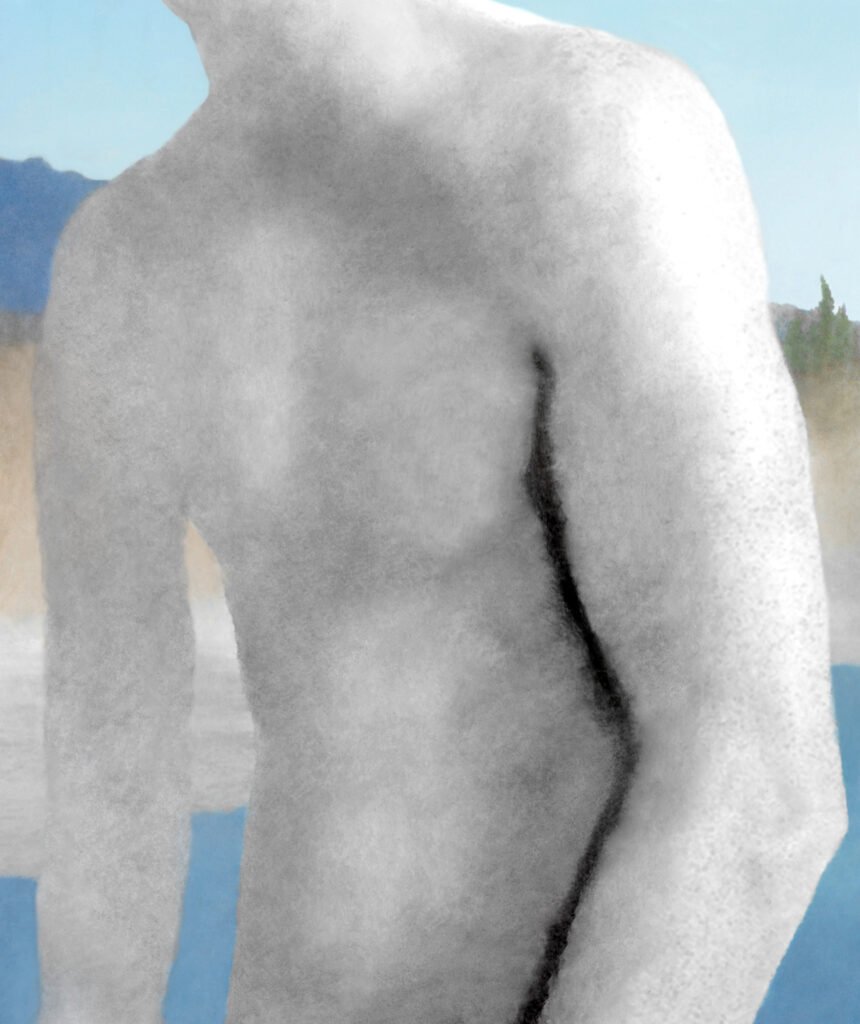Promise Land, a visual poetic epic by American artist Gregory Eddi Jones, usurps photographic convention to confront what the artist considers a spiritual poverty in common cultural pictures. The book uses T.S. Eliot’s Modernist masterpiece, The Waste Land (1922), as its point of departure, and is positioned as a sequence of pictures that picks up where The Waste Land left off nearly 100 years ago.
Using common stock and advertising photographs as his source material, Jones uses strategies of digital composite and physical ink manipulation to craft a new kind of picture that is untethered from the traditional burdens of photography’s relationships to truth and belief. In doing so, he cuts into the hollow cores of empty visual promises and injects potential for multitudes of associative games to be played. Borrowing from Eliot’s strategies of literary allusion and fragmented, collage-like narrative, Jones pulls inspiration from a range of influences including folk pictures and fairy-tale illustrations, to surrealism, stories of myth, common advertising tropes, and photo-historical traditions.
The resulting sequence of images sum up to a visual symphony, composed of nearly 200 images, that harmonizes with a fracturing, “post-truth” contemporary world. Promise Land revisits what many consider to be the greatest poem of the twentieth century while simultaneously reimagining what photography can be.
Jones’ photographic work interrogates politics of common cultural images through strategies of appropriation and re-authorship. Much of his practice is defined by visual criticism, dark humor, cultural commentary, and the updating of photographic traditions for the current day.
Jones has exhibited his work internationally and throughout the United States, and his self-published books are held in numerous institutional photobook collections, including libraries at Museum of Modern Art, The Met, The Brooklyn Museum of Art, Victoria & Albert Museum, and Yale University, among many others. Jones was FOAM Talent in 2019 a PDN 30 nominee in 2020, and a Paul Huf Award nominee in 2021. His first full-length monograph, Promise Land, will be published by Self-Publish, Be Happy in Fall, 2021.
In addition to his photographic practice, Jones has contributed writing to Foam, Afterimage, Paper Journal, LensCulture, and Unseen Magazine. He is the Founding Editor & Publisher of In the In-Between, an independent platform for 21st century photographic authorship.









